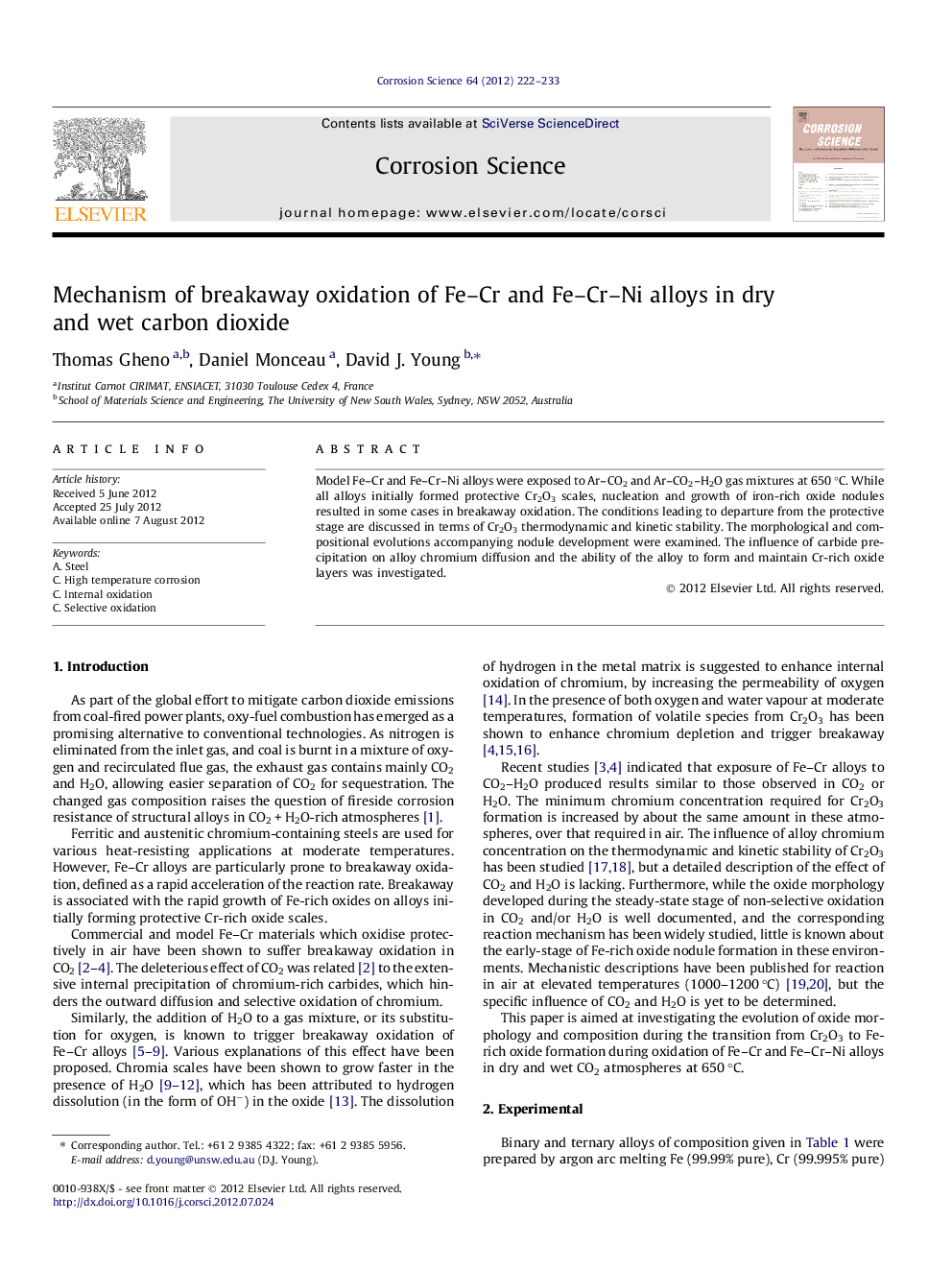| کد مقاله | کد نشریه | سال انتشار | مقاله انگلیسی | نسخه تمام متن |
|---|---|---|---|---|
| 1469343 | 1510031 | 2012 | 12 صفحه PDF | دانلود رایگان |

Model Fe–Cr and Fe–Cr–Ni alloys were exposed to Ar–CO2 and Ar–CO2–H2O gas mixtures at 650 °C. While all alloys initially formed protective Cr2O3 scales, nucleation and growth of iron-rich oxide nodules resulted in some cases in breakaway oxidation. The conditions leading to departure from the protective stage are discussed in terms of Cr2O3 thermodynamic and kinetic stability. The morphological and compositional evolutions accompanying nodule development were examined. The influence of carbide precipitation on alloy chromium diffusion and the ability of the alloy to form and maintain Cr-rich oxide layers was investigated.
► Model Fe–Cr and Fe–Cr–Ni alloys are exposed to Ar–CO2 and Ar–CO2–H2O at 650 °C.
► Fast Fe-rich oxide growth occurs on all alloys except the 25Cr ternaries.
► Limited carbide precipitation underneath Cr2O3 does not affect the oxide stability.
► Fast carburisation underneath Fe-rich oxide prevents repassivation.
Journal: Corrosion Science - Volume 64, November 2012, Pages 222–233